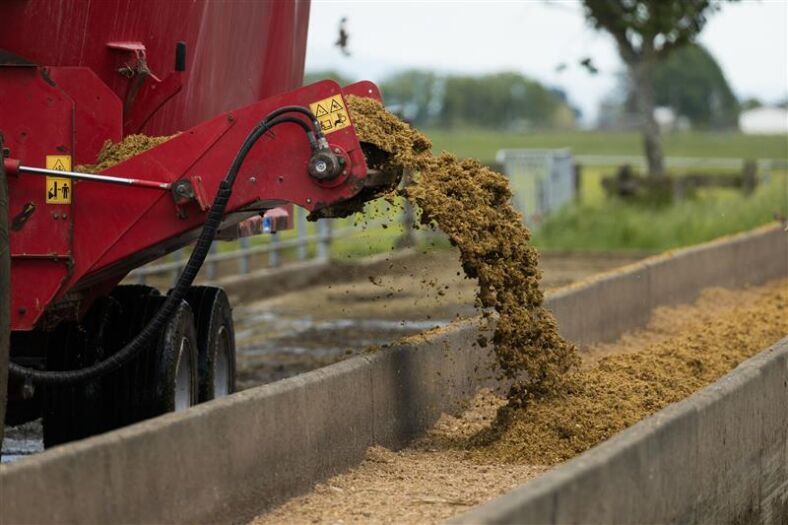
Articles
Value of feedpads expands beyond reducing waste

Over the past few months, I’ve had the privilege of speaking with many farmers at events and one-on-one. In general, there’s a renewed sense of positivity and optimism about the season ahead. With milk price confidence holding, falling interest rates, and new tax incentives, many farmers are considering building or upgrading feedpad infrastructure as their next strategic investment.
While feedpads are nothing new, their value extends well beyond reducing feed wastage. They contribute to improved herd management, easier supplementation of minerals, pasture protection, reduced environmental impact, and increasingly, better cow comfort during periods of heat and cold. When combined with automatic gate openers, they can also save you time bringing cows to the shed.
Feed efficiency and pasture management
One of the clearest economic benefits of a feedpad is reduced feed wastage, especially when feeding valuable supplements like maize silage. Research from both New Zealand and Australia shows feed wastage on pasture can exceed 20–30%, particularly in wet conditions. On a well-managed feedpad, this figure can drop to just 5–10%.
For a 500-cow herd feeding 5 kgDM of silage per cow per day over 100 days, this reduced wastage could result in a saving of 30 tDM, worth around $10,000–$15,000, based on current prices.
Feeding on pasture in poor conditions not only wastes supplement, it also damages the pasture itself. Pugging can reduce short-term pasture growth by up to 50%, and repeated damage can compromise paddock recovery, increase regrassing costs, encourage the growth of weeds and less productive grasses and reduce long-term pasture production.
Managing hot and cold stress
Managing heat stress is a growing priority as summers become hotter and more humid. Heat stress reduces milk production and feed intake, and hits hardest during the afternoon and evening.
Feedpads offer practical ways to reduce heat load by:
- Providing shade, especially in covered or partially sheltered structures
- Offering central access to water and shelter
- Allowing feeding during cooler times of the day, while reducing the energy cows expend walking between paddocks
Cows experience heat stress when the Temperature-Humidity Index (THI) exceeds 68 for Holstein- Friesians or 75 for Jerseys. NIWA data confirms that in the Waikato, more than 70 days per year exceed this threshold.
At Owl Farm near Cambridge, cows experienced over 100 hours per week of thermal discomfort in the summer of 2021. This resulted in an estimated production loss of 6 kgMS per cow3, or around $30,000 in missed income for a 500-cow herd at a $10/kgMS payout.
Providing shade through feedpad infrastructure could reduce these losses by 50% or more provided there is adequate ventilation.
At the other end of the spectrum, cold and wet winter conditions, especially in regions like Southland, can increase daily energy demand by up to 35 MJME per cow, due to wind chill and low temperatures.
Over a 90-day winter, dry cows wintered outdoors may require an additional 1.5 kgDM/day just to maintain body temperature. Using a covered or sheltered feedpad can reduce this energy cost, potentially saving $54 per cow, or $27,000 for a 500- cow herd, assuming a feed cost of $0.40/kgDM.
Environmental Value
Feedpads also offer important environmental benefits. When integrated with well-managed effluent systems, they can significantly reduce nutrient losses, particularly during wet winter and early spring weather.
New Zealand research shows that well-managed off-paddock facilities can cut nitrate leaching by 25–55%. Effluent collected can be stored and applied at appropriate rates during favourable weather conditions, improving nutrient use efficiency and reducing the risk of losses caused by overloading sensitive soils.
A smart time to invest
With strong milk price forecasts, reduced interest rates, and the Government’s tax incentive on new capital purchases, this is an opportune time to consider investment in infrastructure that supports long-term productivity, profitability, sustainability, and cow comfort.
When used well, feedpads are a strategic lever that can unlock more value from high-quality feeds like maize silage, protect pastures, reduce nutrient losses, and help manage climate extremes. They’re not about making farming more complicated.
If you’re considering building or upgrading a feedpad, talk to your consultant or contact one of our Farm Systems Specialists, Matt Dalley or Wade Bell.
Author, Wade Bell, Pioneer Farm Systems Manager. Published by Rural News 12/07/2025.
